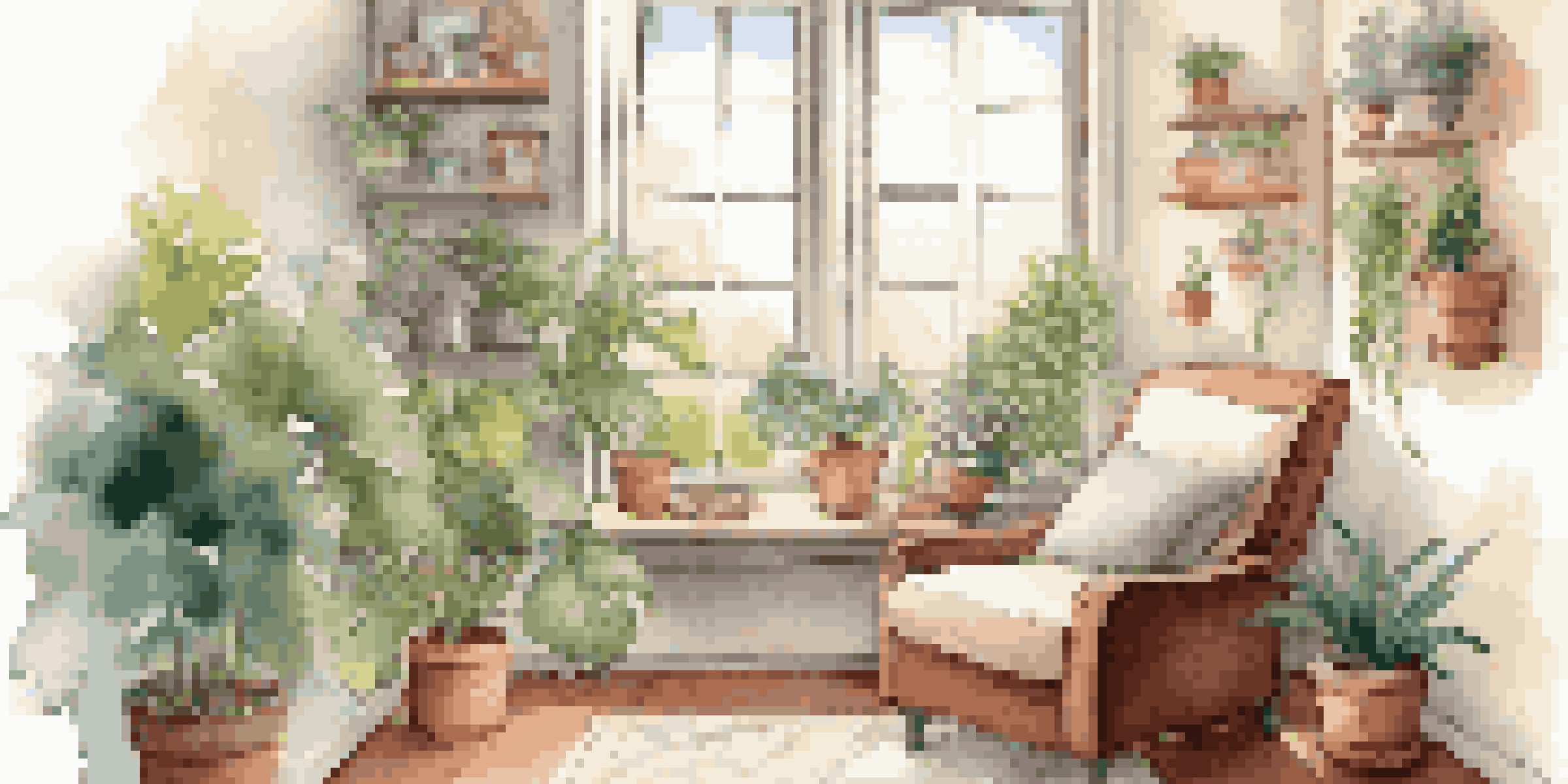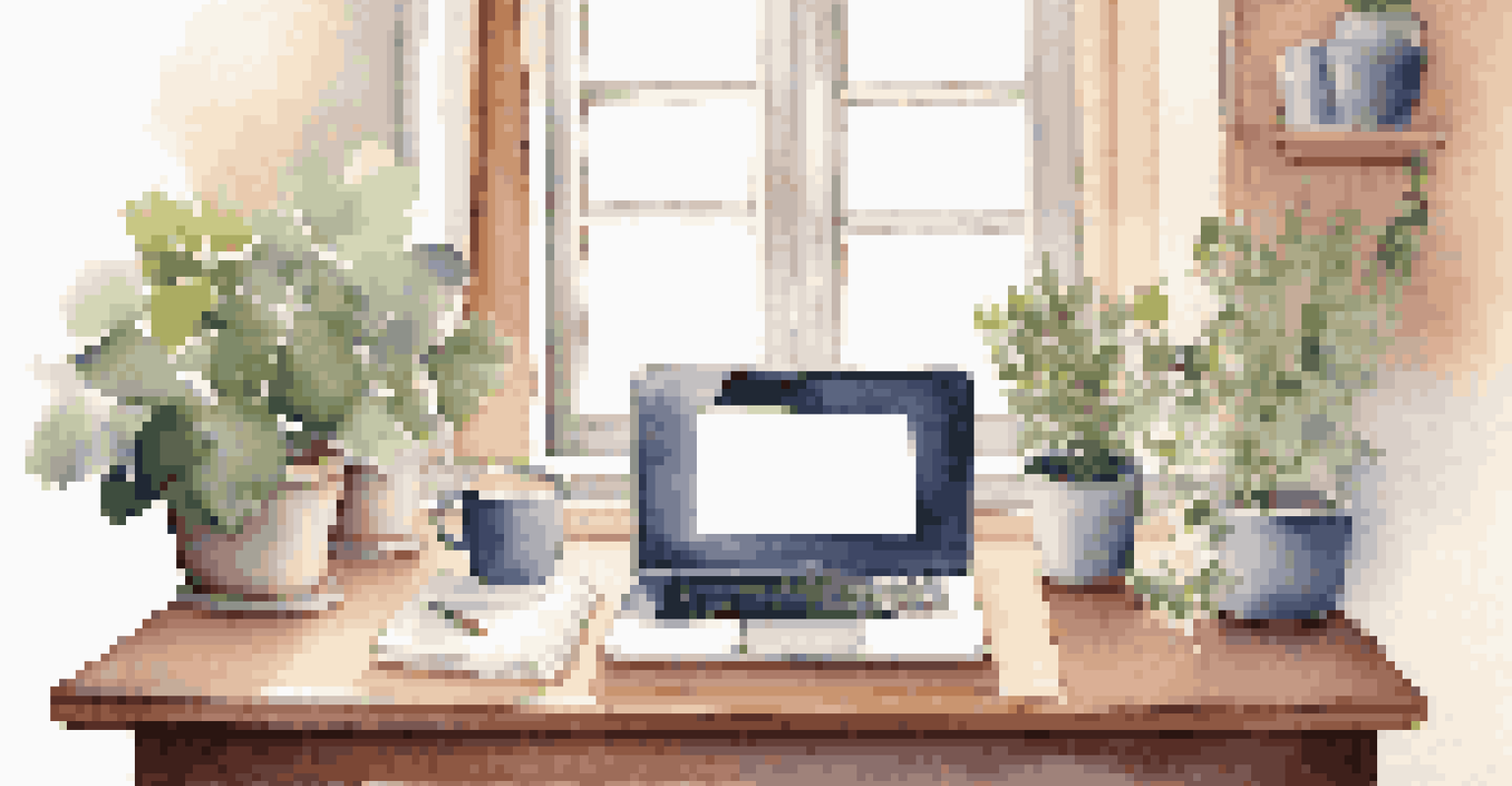Using Technology Mindfully to Enhance Relaxation Practices

Understanding Mindfulness in the Digital Age
In our fast-paced digital world, mindfulness can sometimes feel like a distant concept. Yet, it's essential for enhancing our overall well-being. Mindfulness encourages us to be present and fully engaged in the moment, which can be particularly challenging when technology constantly demands our attention.
Mindfulness isn't difficult. We just need to remember to do it.
By recognizing how technology affects our mental state, we can begin to integrate mindful practices into our daily routines. Imagine treating your smartphone like a powerful tool rather than an endless source of distraction. This shift in perspective is the first step toward using technology to support, rather than undermine, our relaxation efforts.
Ultimately, understanding mindfulness in the context of technology allows us to create a balance where we can enjoy the benefits of digital tools while still cultivating a sense of peace and calm in our lives.
Choosing the Right Apps for Relaxation
With thousands of apps available, selecting the right ones for relaxation can be overwhelming. It's important to choose applications that genuinely promote calmness and mindfulness. For instance, meditation apps like Headspace or Calm provide guided sessions that can help you unwind and focus your thoughts.

When exploring these apps, consider your personal preferences and needs. Do you prefer guided meditations, calming sounds, or perhaps gentle reminders to breathe? Finding the right fit can transform your technology into a supportive ally in your relaxation practices.
Embrace Mindfulness with Technology
Integrating mindful practices allows us to use technology as a tool for relaxation rather than a source of distraction.
Remember, the goal is to enhance your relaxation, not complicate it. Keeping your app usage simple and intentional can lead to a more fulfilling experience.
Setting Boundaries with Technology
Just as we need to establish boundaries in our personal relationships, setting boundaries with technology is vital for our mental health. This means designating specific times to unplug and fully engage in relaxation practices without distractions. For example, consider a device-free hour before bedtime to unwind peacefully.
Technology is a useful servant but a dangerous master.
Communicating these boundaries with friends and family can also help them understand your commitment to self-care. You might even inspire them to join you in creating a more mindful tech routine. By collectively agreeing to respect these boundaries, you create an environment that fosters relaxation.
Ultimately, these boundaries help to reinforce the idea that technology should serve you, not control you. Practicing this intentional separation can significantly enhance the quality of your relaxation time.
Creating a Tech-Free Relaxation Zone
Designating a specific area in your home as a tech-free relaxation zone can be incredibly beneficial. This could be a cozy corner of your living room or a quiet spot in your garden where you can unwind without digital distractions. Envision this space as your sanctuary for peace and tranquility.
In this zone, you can engage in activities that promote relaxation, such as reading, journaling, or practicing yoga. By physically separating yourself from technology, you allow your mind to shift gears and embrace a more serene state. Adding plants, soft lighting, or calming scents can enhance this environment further.
Set Boundaries for Mental Health
Establishing tech-free times helps reinforce the idea that technology should support your well-being, not control it.
Remember, the key is to create a space that feels inviting and calming. This commitment to a tech-free zone can drastically improve your relaxation practices and encourage a deeper connection with yourself.
Incorporating Mindful Listening with Technology
Mindful listening is an often-overlooked aspect of relaxation that technology can enhance. Platforms like Spotify or YouTube offer a wealth of calming music and nature sounds that can help you unwind. By intentionally choosing what you listen to, you can create an audio environment that soothes your mind.
When engaging in mindful listening, eliminate distractions and truly immerse yourself in the sounds. Close your eyes and focus on the rhythm, melody, or even the silence between notes. This practice not only promotes relaxation but also enhances your ability to be present.
Incorporating mindful listening into your daily routine can be as simple as setting aside a few minutes each day to enjoy your favorite calming playlist. Over time, this habit can significantly enhance your relaxation practices.
Using Guided Meditations for Deeper Relaxation
Guided meditations are a fantastic way to deepen your relaxation practices, especially when using technology mindfully. Many meditation apps offer a variety of guided sessions tailored to different needs, from stress relief to improving sleep quality. These sessions can provide structure and support for those new to meditation.
As you listen to a guided meditation, allow yourself to be fully present and engaged in the experience. This commitment can lead to profound relaxation, as you let go of distractions and immerse yourself in the process. These sessions can become your trusted companions on your journey to relaxation.
Create a Relaxation Sanctuary
Designating a tech-free area in your home fosters a peaceful environment that enhances your relaxation practices.
Make it a habit to explore different types of guided meditations, as each can provide unique benefits and insights. This exploration can help you discover what resonates best with you, enhancing your overall experience.
Reflecting on Your Technology Use for Relaxation
Taking the time to reflect on your technology use can significantly enhance your relaxation practices. Consider keeping a journal where you track how different digital interactions influence your mood and relaxation levels. This self-awareness can help you identify patterns and make informed choices about your tech habits.
For instance, you might notice that scrolling through social media before bedtime leaves you feeling anxious rather than relaxed. This insight can lead you to adjust your evening routine, perhaps by replacing screen time with reading or meditation. It’s all about finding what works best for you.

Ultimately, this reflection encourages a deeper understanding of how technology impacts your life. By being intentional about your choices, you can create a tech experience that aligns with your relaxation goals.